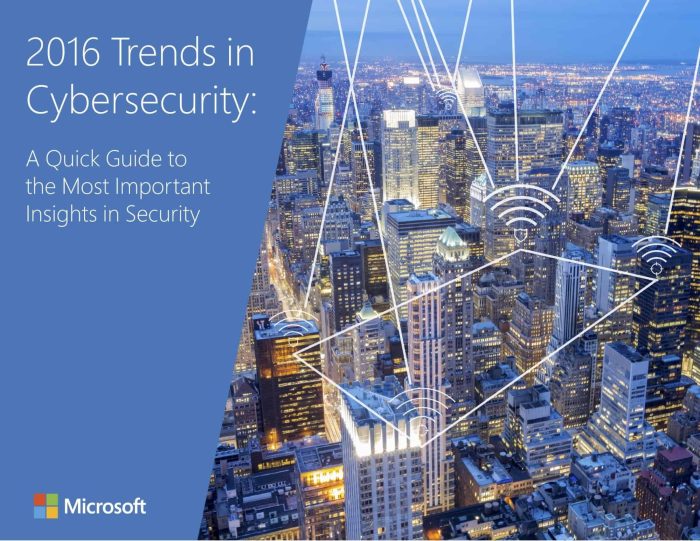
Step into the world of computer security with a twist! Download e-books on computer security and level up your digital defense game like never before. Get ready for a journey filled with insights, tips, and interactive learning.
Let’s dive into the realm of electronics, computer repair, data communication, e-books, graphics, multimedia, and hardware to explore the multifaceted aspects of securing your digital world.
Electronics and Electrical
Electronics play a crucial role in ensuring computer security by providing the necessary hardware components and systems to protect data and prevent unauthorized access.
Role of Electronics in Computer Security
- Encryption technologies such as secure sockets layer (SSL) and transport layer security (TLS) are implemented in electronic devices to secure data transmission over networks.
- Firewalls, which are electronic devices, monitor and control incoming and outgoing network traffic based on predetermined security rules to protect against cyber threats.
- Biometric authentication systems utilize electronic sensors to verify the identity of users based on unique physical characteristics such as fingerprints or facial recognition.
Contribution of Electrical Components to Computer Security
- Power supply units in computers help regulate the flow of electricity to prevent damage from power surges or fluctuations, safeguarding the integrity of data stored on the system.
- Electromagnetic interference (EMI) shielding in electronic components protects against external electromagnetic radiation that could disrupt the operation of sensitive computer systems.
- Grounding systems ensure that electrical circuits are properly connected to the earth to prevent electric shocks and reduce the risk of hardware failures due to static electricity.
Impact of Electronic Devices on Data Protection
- Hardware security modules (HSMs) are specialized electronic devices designed to securely store and manage cryptographic keys, enhancing the overall security of sensitive data.
- Secure boot mechanisms in electronic devices verify the integrity of the system firmware and prevent unauthorized modifications that could compromise the security of the device.
- Data encryption tools integrated into electronic devices protect information by converting it into unreadable code that can only be decrypted with the appropriate encryption key.
Computer Repair and Consulting
In the realm of computer repair and consulting, ensuring security is paramount to safeguarding sensitive data and protecting systems from potential threats.When providing repair and consulting services for computer systems, it is crucial to address security concerns to prevent data breaches, malware infections, and unauthorized access. By implementing robust security measures, technicians and consultants can help clients maintain the integrity and confidentiality of their information.
Importance of Computer Security in Repair and Consulting
- Regularly update software and operating systems to patch vulnerabilities that could be exploited by cyber attackers.
- Use strong passwords and implement multi-factor authentication to enhance access control and prevent unauthorized entry.
- Encrypt sensitive data to protect it from unauthorized access and ensure confidentiality.
- Train users on best practices for cybersecurity, such as recognizing phishing attempts and avoiding suspicious links or downloads.
Common Security Issues Encountered during Computer Repair
- Malware infections resulting from outdated antivirus software or lack of security updates.
- Data breaches due to weak passwords or inadequate access controls.
- Unauthorized access to sensitive information by malicious actors or disgruntled employees.
- Phishing attacks targeting unsuspecting users and tricking them into revealing confidential information.
Strategies for Ensuring Security when Consulting on Computer Systems
- Conduct thorough security assessments to identify vulnerabilities and develop a tailored security plan.
- Implement firewalls, intrusion detection systems, and other security tools to monitor and protect network traffic.
- Establish backup and recovery procedures to minimize data loss in the event of a security incident.
- Educate clients on cybersecurity best practices and provide ongoing support to address security concerns.
Data Communication
Data communication plays a crucial role in ensuring secure e-book downloads. It involves the transmission of digital data between devices or systems, allowing users to access and download e-books securely over the internet.
Data Encryption in Secure Data Transmission
Data encryption is a fundamental aspect of secure data transmission during e-book downloads. It involves encoding the data in such a way that only authorized parties can access and decipher it. By encrypting the data, sensitive information within the e-books remains protected from unauthorized access or interception by cybercriminals.
- Data encryption uses algorithms to convert plain text into ciphertext, which can only be decrypted with the corresponding decryption key.
- Secure Socket Layer (SSL) and Transport Layer Security (TLS) are commonly used encryption protocols to secure data transmission over the internet.
- Encryption ensures that even if data is intercepted during transmission, it remains unreadable and secure.
Different Data Communication Protocols for Secure E-book Downloads
When it comes to downloading e-books securely, various data communication protocols play a significant role in ensuring the integrity and confidentiality of the transmitted data.
- FTP (File Transfer Protocol): FTP is a standard network protocol used for transferring files between a client and a server. While FTP itself is not secure, FTPS (FTP Secure) adds a layer of encryption for secure data transmission.
- HTTP (Hypertext Transfer Protocol): HTTP is commonly used for downloading e-books from websites. However, for secure downloads, HTTPS (HTTP Secure) should be employed, utilizing SSL/TLS encryption.
- SFTP (SSH File Transfer Protocol): SFTP is a secure file transfer protocol that uses SSH encryption to protect data during transmission.
- SCP (Secure Copy Protocol): SCP is a secure file transfer protocol that operates over SSH, providing secure data transfer and encryption.
Computers E-Books

In today’s digital age, e-books have become a popular way to access information on a wide range of topics, including computer security. These digital books offer a convenient and accessible way to learn about the latest trends, techniques, and best practices in keeping your computer systems safe from cyber threats.
Types of E-Books Available on Computer Security
- Beginner’s Guide to Cybersecurity: These e-books are perfect for those new to the world of computer security, providing a comprehensive overview of common threats and how to protect against them.
- Advanced Techniques in Ethical Hacking: For those looking to delve deeper into the world of cybersecurity, these e-books cover advanced topics such as penetration testing, cryptography, and network security.
- Mobile Security Best Practices: With the rise of mobile devices, these e-books focus on securing smartphones and tablets from malware, data breaches, and other threats.
How to Download E-Books on Computer Security
- Choose a reputable e-book platform: Look for well-known websites or online stores that specialize in computer security e-books.
- Search for the desired e-book: Use s related to computer security to find the specific e-book you are looking for.
- Select the e-book format: Depending on your preference, you can choose to download the e-book in PDF, EPUB, or other formats compatible with your device.
- Complete the purchase (if required): Some e-books may be free to download, while others may require a purchase. Follow the prompts to complete the transaction.
- Download and enjoy: Once the e-book is downloaded to your device, you can start reading and expanding your knowledge of computer security.
Benefits of E-Books as a Learning Resource for Computer Security
- Convenience: E-books can be accessed anytime, anywhere, making it easy to learn on the go.
- Cost-effective: E-books are often more affordable than traditional printed books, saving you money in the long run.
- Updated content: With the ability to quickly update digital content, e-books provide access to the latest information and trends in computer security.
- Interactive features: Many e-books come with interactive elements such as quizzes, videos, and links to enhance the learning experience.
Graphics and Multimedia
Graphics and multimedia content play a crucial role in enhancing e-books on computer security by providing visual aids and interactive elements that help readers understand complex concepts more easily. In the field of computer security, where technical information can be dense and challenging, the use of graphics and multimedia can make the content more engaging and accessible to a wider audience.
Enhancing E-books with Multimedia Elements
Multimedia elements such as videos, animations, simulations, and interactive quizzes can greatly enhance the learning experience in e-books on computer security. For example, a video demonstration of a hacking technique can help readers grasp the concept better than a text description alone. Interactive quizzes can test the reader’s knowledge and reinforce key concepts, making the learning process more engaging and effective.
- Video demonstrations of cybersecurity concepts
- Interactive simulations of cyber attacks
- Quizzes to test knowledge retention
Effective Graphics in E-books
Effective graphics in e-books related to computer security include visual representations of networks, cybersecurity tools, encryption algorithms, and threat landscapes. Infographics can simplify complex information and make it easier for readers to understand key concepts at a glance. Diagrams and flowcharts can visually illustrate processes and procedures, enhancing comprehension and retention of information.
- Network topology diagrams
- Encryption algorithm visualizations
- Threat landscape infographics
Computers Hardware
When it comes to computer security, hardware components play a crucial role in ensuring the protection of data and systems. The security of a computer system is not solely dependent on software solutions, but also heavily relies on the hardware that powers the machine.
Influence of Hardware Components on Computer Security
- Hardware components such as the processor, memory, and storage devices can impact the overall security of a computer system by determining its performance and ability to handle security measures efficiently.
- Secure hardware components are designed to prevent unauthorized access, protect data from breaches, and ensure the integrity of the system.
- Having reliable hardware components can enhance the overall security posture of a computer system and mitigate potential vulnerabilities.
Importance of Hardware Security Features
- Hardware security features such as Trusted Platform Module (TPM), secure boot, and hardware encryption play a vital role in protecting sensitive data stored on the system.
- These features provide an additional layer of security that is independent of software vulnerabilities, making it harder for attackers to gain unauthorized access to the system.
- Hardware security features are essential for securing critical information, such as passwords, encryption keys, and user credentials, from being compromised.
Comparison of Hardware Solutions for Enhancing Computer Security
- Various hardware solutions, such as hardware firewalls, biometric authentication devices, and secure hardware tokens, offer different levels of security for protecting computer systems.
- Hardware firewalls provide network security by filtering incoming and outgoing traffic, while biometric authentication devices offer a more secure way of verifying user identities.
- Secure hardware tokens, such as USB security keys, provide an extra layer of authentication for accessing sensitive data and applications.
Ultimate Conclusion

As we wrap up this adventure into the world of computer security and e-books, remember that knowledge is power. Downloading e-books on computer security not only enhances your skills but also empowers you to navigate the digital landscape with confidence. Stay safe and informed!
Questions Often Asked
Are e-books on computer security suitable for beginners?
Yes, many e-books cater to beginners and offer step-by-step guides to enhance understanding.
How can I ensure the security of e-book downloads?
Make sure to download from reputable sources, use secure networks, and keep your antivirus software updated.
Do e-books on computer security cover the latest trends in cyber threats?
Most e-books are updated regularly to include the latest trends and insights in cybersecurity.




